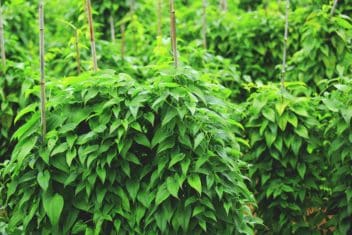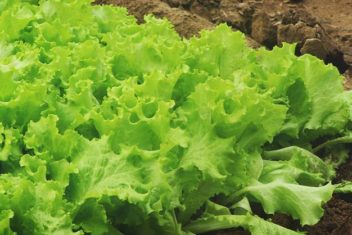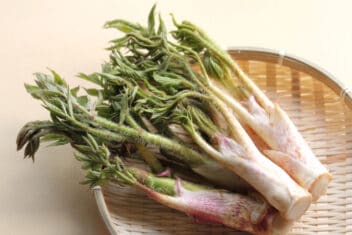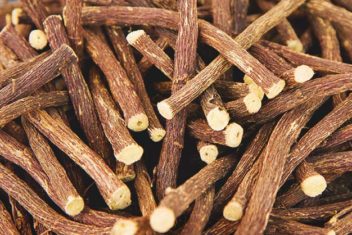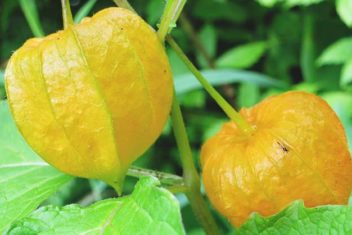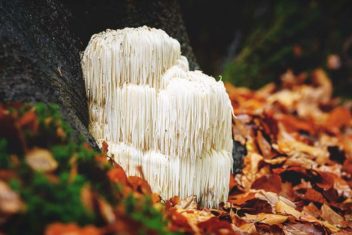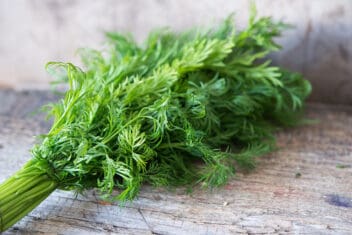Ramps or wild leeks are my favorite ‘wild’ plants for growing in the garden. Before I cultivated them in my food forest, I couldn’t wait for spring foraging opportunities to go out and find well-established ramp patches.
You don’t need a food forest or large area to grow ramps, though. You just need to get the conditions right in a small part of your garden or woodland.
Some areas restrict or ban foraging for ramps in the wild due to depletion, so it makes sense to grow your own source of this wonderful plant. The combination of onion and garlic freshly picked and cooked will have you coming back time and again, so let’s show you how to grow your own supply.
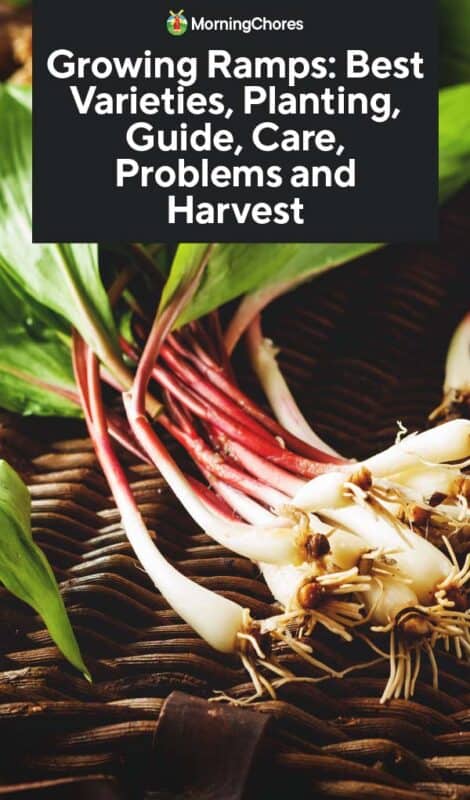
Varieties of Ramps
For the home grower, there is really only one variety of ramp that you’ll find at garden suppliers, but it’s worth knowing about the other ramps and ramp relatives out there.
Ramps
The standard variety of ramps, Allium Tricoccum, has broad leaves and a large bulb. They’re sometimes called wild leeks or wild spring onions. It’s the most common type found in the wild and the type you’ll usually see when buying seeds or starts.
It grows wild throughout the Eastern United States and Canada. It thrives in forests where there is rich, moist soil.
Narrow-Leafed Ramps
This type has narrower leaves and is quite rare – in the wild or in gardens. It may be found wild in more remote locations in the Midwest, New England, and Eastern Canada.
Allium burdickii is rarely sold retail. It’s so rare that some scientists worry it’s going extinct. Still, if you come across seeds or starts, it’s worth giving this variety a go in the garden.
Wild Leeks
Allium tricoccum var. burdicki has slightly broader leaves than the narrow-leafed variety and it’s just as rare. Both wild leeks and narrow-leafed ramps are considered endangered in many areas and you shouldn’t forage them if you com across them.
Some people consider wild leeks and narrow-leafed ramps to be the same plant, but they are differentiated by their leaf size.
Ramsons
Ramsons, Allium ursinum, are sometimes called wild garlic, wood garlic, bear leaf, or buckrams. This plant is similar and is related to ramps. It’s native to parts of Europe and the British Isles.
They taste similar to ramps and are a bit larger.
How to Grow Ramps
For the best chance of success with ramps, remember where they grow in the wild. They’re found under the canopy of deciduous forests. They like growing under trees like oak, hickory, buckeye, or linden.
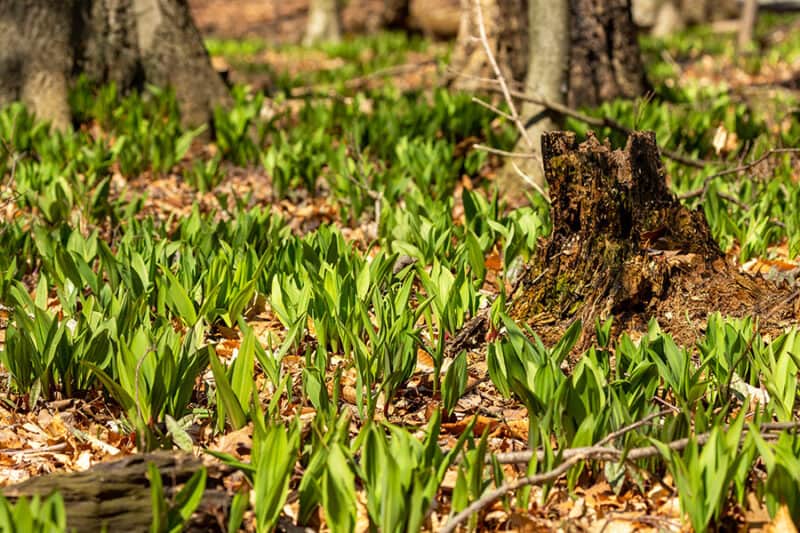
That’s what makes them so ideal for a food forest. They can happily fill in the space underneath trees.
If you don’t have a wooded area to plant ramps in, don’t worry. You can build a little raised bed with a canopy over it to mimic forest conditions.
Growing Zones
Ramps grow very well in zones 3 to 7.
If you live in a cool area with stands of deciduous forests, give ramps a go. The forest environment may provide the conditions the ramps need, even if the environment outside the forest isn’t quite right. That’s how I manage to grow ramps on my property.
Sun Requirements
Ramps love and need shade. This is why they suit permaculture and food forests. A little bit if sunshine is fine, but direct sunlight will hinder the growth of ramps.
Dapples of sunlight are good as long as the sun isn’t intense enough to heat up the area where the ramps are. In the wild, ramps emerge when the canopy is thinning and sunlight begins to appear on the forest floor.
By the time the canopy fills out, ramps are tapering off for the season. That means that they don’t actually grow in full shade in the wild. They do, however, dislike being too hot.
Soil Requirements
Ramps grow best in well-rotted organic matter, just as if they are on the forest floor under a canopy. Soil should be acidic. Aim for a pH of 5.0 to 6.5 with plenty of calcium.
The soil should be loamy and well-draining. Work in ample compost to improve your soil’s condition and re-create the environment found under trees.
Add gypsum for a good calcium boost. Follow the measurements on the gypsum bag.
When to Plant
Ramp seeds should be planted in late summer to early fall. Seeds can be collected from wild plants or purchased from seed merchants. Seeds need a period of warmth followed by a period of cold in order to germinate.
Transplant ramp bulbs in early spring. These can be bought from suppliers or transplanted from wild patches.
Container Planting
Container planting is a good option if you don’t have the right conditions in your garden. A shallow raised bed is ideal. Ramps don’t have deep roots, so a 1-foot deep bed gives the plants plenty of room to grow.
Left to their own devices in an area that they like, ramps will spread out and fill up a container.
Planting Seed
Here is where your patience will be tested if you like swift growing plants. Although it’s worth it in the end, ramps take a long time to reach harvestable size.
Plant the seeds by scraping away the layer of fallen leaves and mulch to expose the soil beneath. Rough up the top layer of soil with a rake. Place the seeds about 4-6 inches apart and press gently with your hand.
Cover with 2 inches of leaves and water well.
The seeds need warm weather to encourage the roots to break dormancy. Then they need cold weather to encourage the shoots to emerge. It may take up to two years for the seeds to germinate if they don’t get the right conditions the first year that they’re in the ground.
You then need to allow the ramps to develop a good root system before you harvest and this could take a couple more years to develop a good ramp patch. In fact, you shouldn’t expect to harvest ramps planted by seed for at least 5 years, and possibly more.
Transplant Bulbs
This is a swifter route to a well-established ramp patch. If you’re able to, locate a patch of wild ramps and dig some up carefully, leaving plenty in the ground.
A better option is to purchase ramp bulbs if you can find them, since many wild ramps are over-harvested. You should only take 10 percent of the ramps in a patch in one year.
Plant these in your patch about 4 to 6 inches apart, ensuring the bulb and root are covered with soil. Cover with 2 inches of leaves and water well. Regardless of where you get them, ramp bulbs should be planted within a few days of getting them.
These should be ready to begin harvesting in 2 or 3 years.
Plant Root Scraps
This may be the easiest way to get your hands on some ramps for growing. Buy ramps from the store or farmer’s market. Cut the bottom inch leaving the roots on and soak in water overnight. Plant the roots out the next day, cut side facing up. Cover with soil and 2 inches of leaves.
Spacing
Space seeds four inches apart and bulbs 4 to 6 inches apart.
Caring for Ramps
The goal when establishing a ramp patch is to have it be self-sustaining. That’s why you don’t harvest them for at least two to three years. This allows them to establish themselves.
After this time, just take a couple of leaves from each plant leaving the bulbs to send out rhizomes over the next few years.
Eventually, you will have a healthy, thriving ramp patch that grows and expands each year.
Fertilizer
Ramps are a wild plant that grows perfectly well on its own in the right conditions. If you create a new patch ensure the soil is full of rich, well-rotted organic matter, just like the forest floor.
Ramps like to have a lot of calcium in the soil, so if your soil is lacking, you’ll want to add some.
Water
Ramps love soil that is moist, but not waterlogged. They need about an inch-and-a-half of water per week so ensure to use irrigation or water well if the season is dry.
Mulch
Mimic the environment where ramps grow naturally and ensure there is a two-inch layer of leaves. If you have chosen an area in a woodland, the trees will take care of the mulch for you over time.
Companion Planting for Growing Ramps
Ramps grow well with other plants that favor the understory of the forest.
- Ginseng
- Mayapples
- Nettles
- Trout Lillies
- Black cohosh
- Trilliums
Don’t plant them under conifers.
Common Problems and Solutions for Growing Ramps
Keep an eye out for the following issues.
Aphids
Aphids overwhelm ramps quickly. These sap-sucking insects can cause them to wither and die if the numbers get too high. There are lots of ways to deal with these bugs, and our guide will show you how.
Spider Mites
These are tiny spider-like insects that live on the undersides of leaves. They are so small, you may not know you have spider mites until you have an infestation.
In high numbers, spider mites cause leaves to yellow and die and the growth of the plant may become stunted. Spider mites puncture cell walls to feed and like aphids, will overwhelm plants in high numbers.
Fortunately, dealing with these little suckers isn’t too difficult.
Anthracnose
This is a fungal disease common in spring when the weather is cool and wet. It will infect the leaves and stalks of ramps. It is likely to be present before the ramps are even planted. Anthracnose overwinters in fallen, dead leaves.
Anthracnose creates lesions on the leaves which of course is problematic when we want to eat the leaves. While the disease is rarely fatal, it lowers the yield of ramps.
Prevention is key to anthracnose. Remove any surrounding plants that become diseased and don’t over water the ramps in cool wet weather.
Once dry, warm weather returns, the plants often take care of the fungus themselves. If you use neem oil regularly for other issues, it should help to prevent anthracnose.
Powdery Mildew
Powdery mildew isn’t common with ramps, but it may occur when the conditions for spread are favorable. Mildew spreads in humid weather.
The ramps will look like they’ve been sprinkled with white flour. Eventually, the leaves turn yellow and dry out.
We have a whole guide dedicated to helping you tackle any powdery mildew issues.
Harvesting Ramps
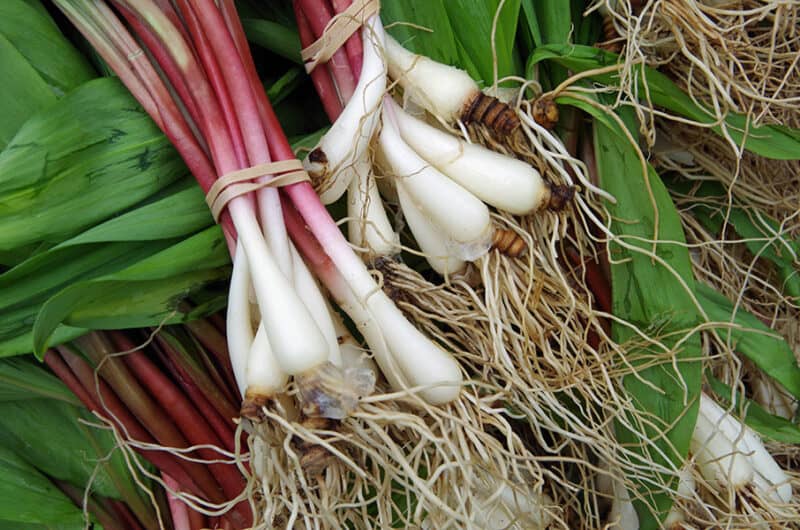
The temptation with ramps is to harvest them as soon as they are grown. You must resist the urge for the first couple of years, however. Just pick a few leaves (even one) off each plant in the second year on.
Leave the plants alone for the first year, and be careful not to disturb the soil, even when they’re dormant.
That’s because for the first two years, ramps are establishing their root system. If you distrub them, you could damage or even kill the plant.
Harvest around year five when the ramps are more established. Harvest just before the leaves turn yellow.
Only take about ten percent of your plants, leaving the rest for next year. I take from the center of the patch and leave the outside to continue for next year.
Gently lift the ramps you want out of the ground, bulb and all and try not to disturb the rest.
Using Ramps
Sautee in butter, roast, grill or use them raw in a salad. Use ramp leaves like you would chard. I use them in risotto, stew, and casseroles. The bulbs can be used in the same way you’d use leeks, but don’t be afraid to experiment.
When you taste ramps, you’ll realize why people love to forage for them.
Seed Saving
Although I prefer to plant bulbs, I will collect the seeds when the flowers have dried out. Eventually, ramps send out rhizomes and spread, but until they do, let the seeds drop to the ground or collect them and spread them further out.
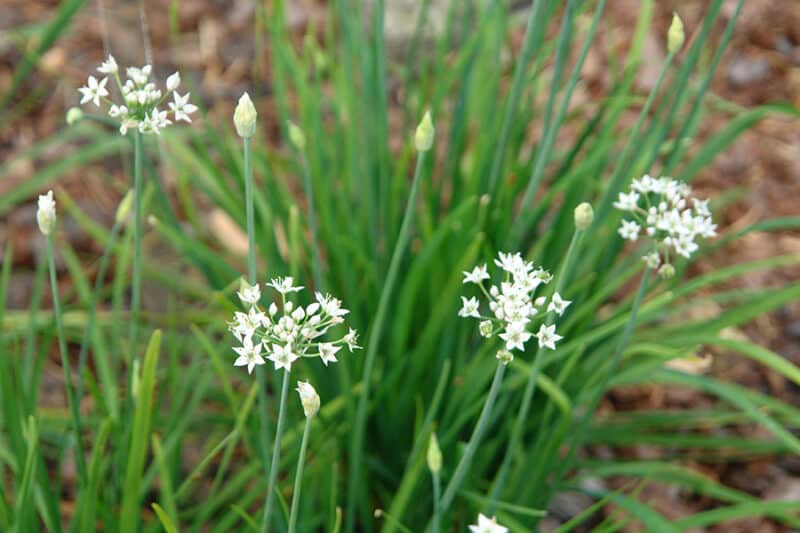
You could give them away to help someone else start a ramp patch.
Give ramps a go if you have the right spot. Let the patch grow and you will have ramps forever and won’t have to forage the delicate populations in the wild.

